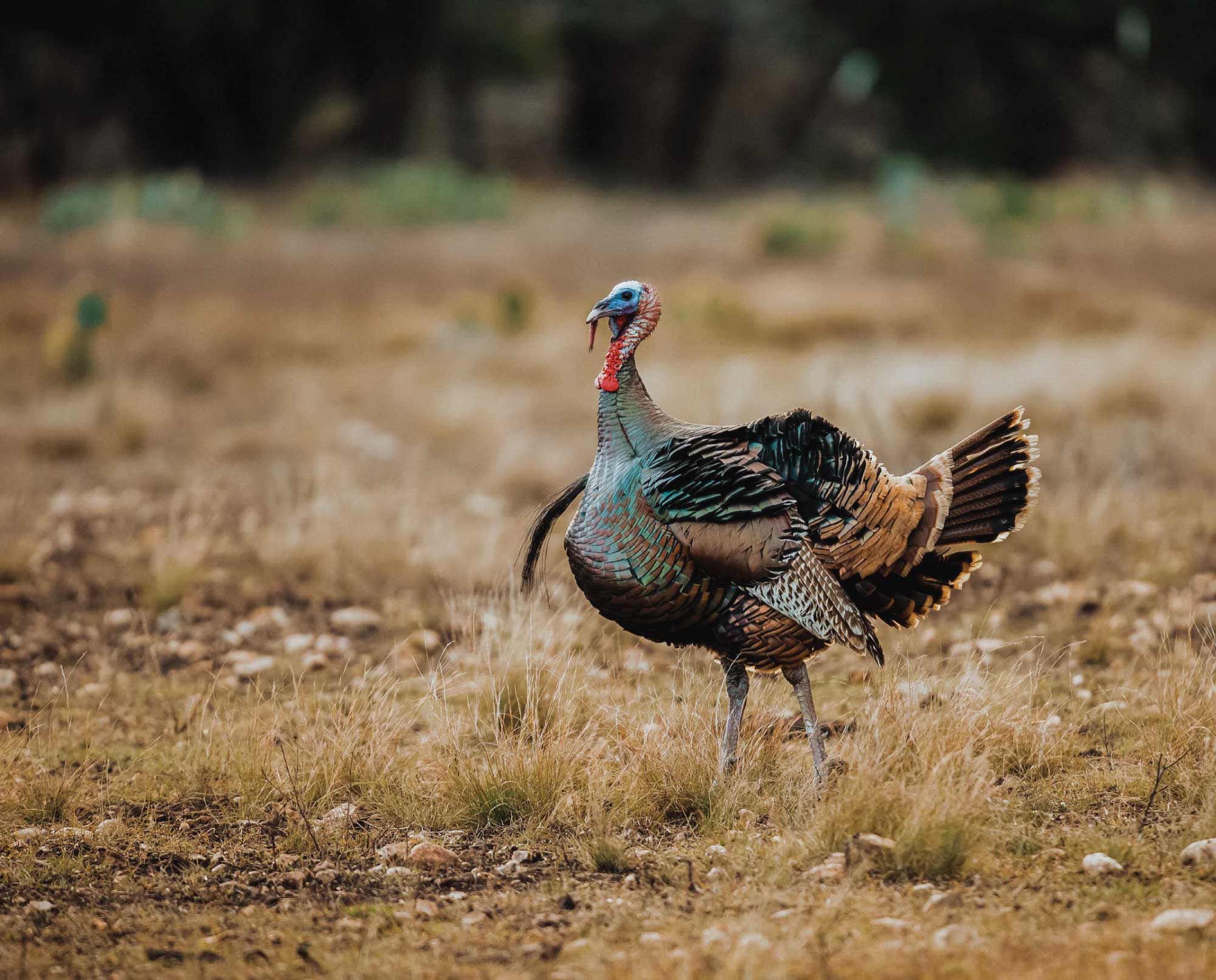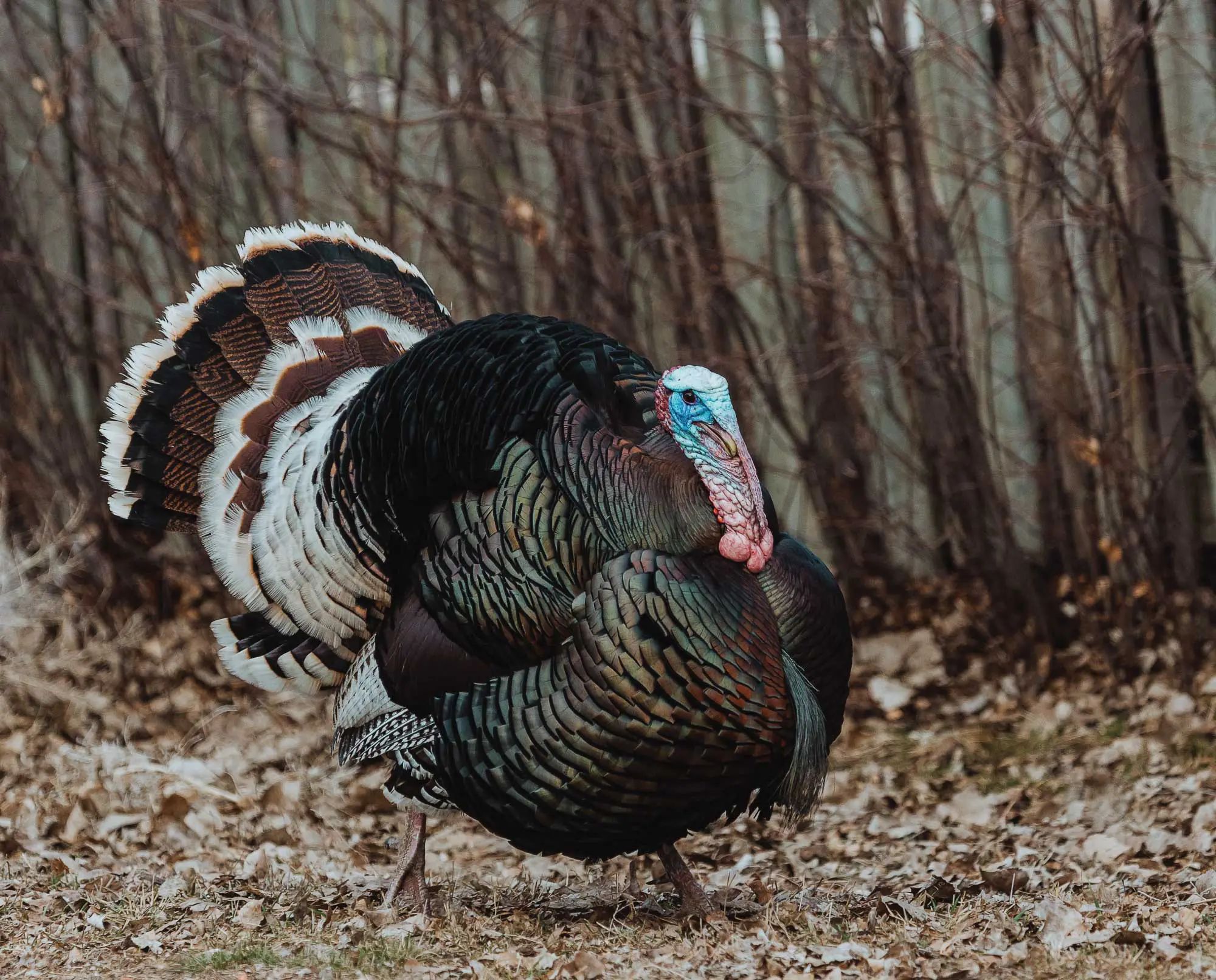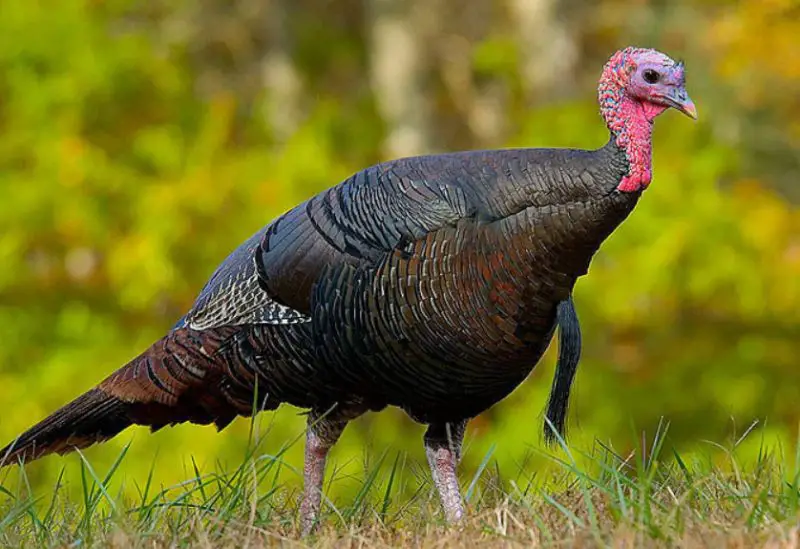Each spring, hunters from across the country travel to California to experience the thrill of pursuing wild turkeys in some of the most scenic and varied landscapes in North America. The state’s terrain includes dense forests, open grasslands, rolling foothills, river valleys, and scrub-covered hills, providing habitats for multiple species of wild turkeys.
Wild turkey hunting in California is not merely a sport; it’s an opportunity to engage with nature, observe intricate wildlife behavior, and learn the delicate balance of ecosystems. Every hunt requires careful preparation, patience, and strategic thinking. Success depends on a combination of knowledge, skill, and understanding the local environment.
The California Department of Fish and Wildlife (CDFW) closely monitors wild turkey populations and sets regulations to maintain sustainable numbers. Hunters are required to acquire proper licenses and tags, understand season dates, and adhere to legal bag limits. Proper planning, ethical hunting practices, and a deep respect for wildlife are fundamental aspects of a productive turkey hunting experience.
Species of Wild Turkeys in California
California is home to three primary species of wild turkeys: Rio Grande, Merriam’s, and Eastern. Each species has unique physical characteristics, behaviors, and preferred habitats, which significantly influence hunting strategies.
Rio Grande Turkey

The Rio Grande turkey is the most widespread species in California, particularly thriving in the central and southern regions where open grasslands meet scattered oak woodlands. These turkeys are easily identified by their dark bronze feathers accented with a striking white-tipped tail, which becomes especially noticeable during strutting displays. Adult males, or toms, often weigh between 16 and 24 pounds, while hens are smaller and less colorful, typically weighing around 8 to 12 pounds.
Rio Grande turkeys are highly social, usually forming flocks ranging from just a few birds to more than a dozen. Within these flocks, the dominant tom plays a crucial role, often leading movements and initiating displays that influence the behavior of other birds. Understanding these social dynamics is key for hunters, as approaching the dominant tom can determine whether the entire group responds to calls and decoys.
These turkeys are primarily ground foragers, feeding on seeds, nuts, berries, insects, and green vegetation. Their activity peaks in the early morning and late afternoon when temperatures are cooler. During spring mating season, males engage in elaborate courtship behaviors, including strutting, tail fanning, wing dragging, and vocal gobbling. Careful observation of these behaviors allows hunters to strategically place decoys and time their calling techniques for maximum effect.
Merriam’s Turkey

Merriam’s turkey occupies the northern mountainous regions of California, favoring higher elevations with mixed conifer, pine, and oak forests. Their plumage is generally lighter than that of Rio Grande turkeys, with a silver-gray sheen that provides excellent camouflage among sun-dappled trees and forest floors. Adult Merriam’s toms are slightly larger than Rio Grande males, typically weighing between 18 and 26 pounds, while hens weigh approximately 10 to 14 pounds.
This species is known for its cautious and alert nature, often requiring hunters to employ subtle calling techniques and careful decoy placement. Merriam’s turkeys spend their nights roosting in tall pine trees to avoid predators, and they fly down at first light to feed in open meadows or forest edges. Recognizing roost sites and early morning flight paths is essential for hunters to position themselves effectively and ethically.
Merriam’s turkeys tend to forage on a varied diet of acorns, berries, seeds, and insects, which they scratch from the forest floor. Observing their feeding and movement patterns over several days can provide valuable insights into the flock’s routines. During breeding season, Merriam’s toms exhibit pronounced territorial behavior, using gobbling and strutting to attract hens and ward off rivals, making them both an exciting and challenging target for hunters.
Eastern Turkey

Eastern turkeys are less common in California but have been successfully introduced to certain regions, including parts of southern California and river valleys. These birds are larger and more robust than Rio Grande or Merriam’s turkeys, with adult toms frequently reaching 22 to 30 pounds. Their plumage is darker, often with a deep bronze or black sheen, and they have a slightly more aggressive temperament.
Eastern turkeys favor dense forests, thick river bottoms, and areas with substantial understory vegetation. This preference for cover makes them more difficult to locate and track. Hunters must rely heavily on careful observation, scouting over multiple days, and understanding the bird’s feeding and movement habits. Eastern turkeys are known to respond well to calls and decoys, but their heightened wariness requires a cautious approach.
These birds feed on a mixture of seeds, nuts, insects, and green vegetation, often covering long distances during the day in search of food. Observing their preferred trails, bedding areas, and feeding zones is critical for a successful hunt. During mating season, toms engage in intense strutting displays and loud gobbling to attract hens, but they are quick to flee at signs of danger, adding a layer of challenge that experienced hunters find both demanding and rewarding.
Preparing for the Hunt
Preparation is a key determinant of hunting success. Understanding turkey behavior, scouting prime locations, and assembling the right equipment are essential steps for any hunter.
Licensing and Regulations
Before heading into the field, hunters must obtain a valid California hunting license and a turkey tag for the specific region and species. The CDFW outlines season dates, bag limits, and hunting zones, which vary by region. Regulations may also differ for public versus private lands. It is crucial to verify the current year’s regulations, including restrictions on the use of certain types of calls, firearms, or bows.
Some areas require hunters to participate in hunter education programs, particularly first-time hunters or youth. Following regulations is not only a legal obligation but also contributes to the long-term conservation of wild turkey populations.
Equipment and Gear
Selecting the right gear is essential for a successful hunt. Camouflage clothing that blends with the local terrain, weather-appropriate layers, and waterproof gear can make long hours in the field more comfortable. Shotguns, bows, or muzzleloaders are common hunting tools, each requiring practice and proficiency.
Effective turkey calls—box calls, slate calls, diaphragm calls—are indispensable. Decoys, strategically placed, can entice curious toms into range. Hunters should also carry essentials such as binoculars, trail cameras, maps, GPS devices, and first-aid supplies. Patience and readiness are key; even minor errors in preparation can affect the outcome of a hunt.
Scouting Techniques
Scouting is a critical component of any successful turkey hunt. Observing roosting locations, feeding areas, and movement trails before the season allows hunters to anticipate where turkeys will be at various times of the day. Early morning observations can reveal roost trees, while afternoon scouting can highlight feeding patterns.
Trail cameras can provide valuable insight into turkey behavior without disturbing the birds. Recording flock sizes, dominant toms, and habitual pathways helps hunters create a detailed plan, making it easier to position calls, decoys, and themselves during the hunt.
Strategies and Hunting Techniques
Successful hunting requires a combination of patience, skill, and adaptability. Hunters often employ multiple techniques based on species, terrain, and environmental conditions.
Calling Techniques
Calling is one of the most effective methods for attracting turkeys. Different calls mimic mating sounds, territorial gobbles, or distress signals. Mastery of timing and tone is crucial; overcalling or using an unrealistic cadence can spook birds. Experienced hunters study the specific calls of their target species and adjust based on distance, wind, and turkey behavior.
Decoy Placement
Decoys are essential tools to draw turkeys within range. Placement should mimic natural behavior, such as a hen feeding or a rival tom strutting. Hunters often position decoys near open fields, trails, or feeding areas. Subtle movements of decoys can further entice toms, but excessive motion may alarm them.
Stalking and Concealment
In densely wooded or scrubby areas, stalking becomes necessary. Hunters must move quietly, use natural cover, and approach from downwind to avoid detection. Patience is key, as turkeys are highly observant and can detect minute movements. Learning to read turkey body language helps hunters anticipate reactions and adjust tactics.
Timing the Hunt
Wild turkeys are crepuscular, meaning they are most active during dawn and dusk. Aligning hunting efforts with these peak activity periods improves chances of encountering turkeys. Hunters must also consider seasonal variations, weather, and wind direction, which affect turkey behavior and movement.
Prime Locations for Turkey Hunting in California
California’s varied geography offers numerous hunting opportunities. Certain regions are particularly renowned for consistent turkey populations and favorable hunting conditions.
Northern California
The northern mountains, with dense conifer and oak forests, provide ideal habitat for Merriam’s turkeys. Public lands, national forests, and wildlife management areas in this region offer structured hunting opportunities. Rugged terrain demands physical fitness and careful planning, but rewards include abundant turkey sightings and scenic surroundings.
Central California
Central California’s rolling grasslands, oak woodlands, and river valleys are prime areas for Rio Grande turkeys. The combination of open spaces and wooded patches allows hunters to employ calling and decoy techniques effectively. Public wildlife areas are well-managed, offering hunters accessible and regulated hunting experiences.
Southern California
Southern California presents a mixture of scrublands, chaparral, and river valleys, supporting both Rio Grande and introduced Eastern turkeys. Private ranches and hunting preserves in this region often provide guided hunts, which are ideal for beginners or those unfamiliar with local terrain. The mild climate extends hunting opportunities and makes scouting easier year-round.
Safety and Ethical Hunting Practices
Safety is paramount during turkey hunting. Hunters must respect private property, follow firearm safety protocols, and comply with CDFW regulations. Ethical hunting practices include fair chase principles, accurate shot placement, and minimizing stress on wildlife.
Hunters are also encouraged to participate in conservation efforts. Proper reporting of harvests, habitat management, and adherence to bag limits help maintain sustainable turkey populations. Ethical hunting ensures that future generations can enjoy the thrill of turkey hunting while preserving ecosystems.
Common Challenges and Solutions
Hunting wild turkeys comes with challenges. Turkeys are highly alert and sensitive to human presence, making stealth and strategy essential.
Wary Birds
Turkeys possess excellent vision and hearing, so approaching cautiously and using realistic calling techniques is crucial. Observing the dominant tom’s behavior can help anticipate movements of the flock.
Weather and Terrain
California’s diverse landscapes mean hunters may encounter extreme heat, rain, or uneven terrain. Proper preparation with clothing, hydration, and navigation tools can mitigate these challenges. Adapting hunting times and strategies based on weather improves effectiveness.
Crowded Hunting Areas
Popular public lands may be crowded during peak season. Scouting less-trafficked areas, hunting off-peak days, or utilizing private lands can reduce competition and increase success.
Conservation and the Role of Hunters
Hunters are vital contributors to wildlife conservation. By following regulations and engaging in habitat management, hunters help ensure sustainable populations of wild turkeys. Data collected from hunting activities supports CDFW efforts to monitor populations, track trends, and maintain balanced ecosystems.
Conclusion
Wild turkey season in California is a rich and rewarding experience, offering hunters the chance to connect with nature, test their skills, and observe remarkable wildlife behavior. By understanding turkey species, scouting prime locations, employing effective hunting strategies, and adhering to ethical practices, hunters can maximize their chances of a successful harvest. California’s diverse landscapes, from dense northern forests to southern river valleys, provide endless opportunities for memorable hunting experiences.
Hunting is not only about harvesting game; it is a way to appreciate wildlife, contribute to conservation, and enjoy the outdoor lifestyle. With preparation, knowledge, and patience, hunters can experience the excitement and satisfaction of wild turkey season in California while ensuring that these magnificent birds thrive for future generations.
FAQs About Wild Turkey Season in California
When Does Wild Turkey Season Begin in California?
Season dates vary each year depending on region and species. Generally, spring season begins in early March, but always consult the CDFW website for current dates and updates.
What Licenses Are Required to Hunt Wild Turkeys?
A valid California hunting license and species-specific turkey tag are required. Special regulations may apply for youth, first-time hunters, or certain hunting zones.
What Is the Best Time of Day to Hunt Turkeys?
Wild turkeys are most active during early morning and late afternoon. Aligning hunting efforts with these periods increases visibility and encounter opportunities.
Are Guided Hunts Available in California?
Yes, private ranches and preserves provide guided hunts, ideal for beginners or those unfamiliar with local terrain.
How Can Hunters Improve Their Chances of Success?
Key strategies include scouting locations, understanding turkey behavior, using calls and decoys, practicing patience, and adjusting tactics based on terrain and weather.






